Visit Toulouse in 2 days
19 must-see POIs, optimized routes and anecdotes.
Loading map...
You will visit the most beautiful points of interest in Toulouse

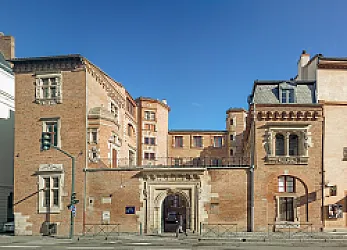
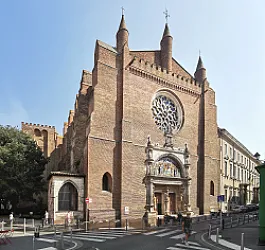




_Le_Square_de_Gaulle.jpg/320px-Rue_d'Alsace-Lorraine_(Toulouse)_Le_Square_de_Gaulle.jpg)
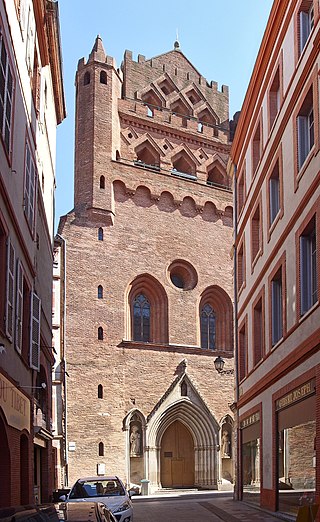










2 Days in Toulouse — A Heartbeat Through the Pink City
Toulouse grabbed my heart the moment I stepped onto Place du Capitole. The air felt warm and alive. Known as "The Pink City," Toulouse glows in terracotta and laughter. Some say it's overrated, but the city rewards slow curiosity. I still remember the first evening I watched light spill across Saint-Etienne Cathedral. That memory pulls me back every time.
Why visit? Because Toulouse is more than monuments. It's a city of soft stone, lively cafés, and vibrant street musicians. Wander from Place du Capitole to the Museum of the Augustinians and you feel history breathe. Taste fragrant cassoulet, hear bicycle bells, and see the brick facades warm under sunlight. This short guide shows you the best of a 2 days in Toulouse visit, with a curated Toulouse itinerary that hits the essentials: Place du Capitole, Museum of the Augustinians and Saint-Etienne Cathedral. Expect charm, unexpected corners, and a slow, satisfying rhythm.
Planning can feel overwhelming. There is so much to see that you could stay for weeks. If this is your first time in Toulouse, choices suddenly feel urgent. I get that. You want authentic moments without rushing. That’s why this plan focuses on what matters most. Below I’ll show you exactly how to spend two days to maximize discovery. You’ll know what to see in Toulouse and where to feel its real pulse.
Key tip: arrive early at major sites to avoid crowds and afternoon heat. Early mornings mean quiet squares, clearer photos, and a calmer pace. This matters because Toulouse is best experienced with time to linger. Skip the rush, sip coffee slowly, and let the city reveal itself. Now let’s dive into the itinerary!

Quick Mini Guide to Toulouse
Where to stay:
- Capitole/Carmes — central, 5–10 min walk to Place du Capitole and cafés; best for first-time visitors.
- Saint-Cyprien — river views, art scene and quieter evenings; good if you prefer local life across the Garonne.
- Near Jean Jaurès — budget options and fast tram/metro to museums and train station.
When to visit:
- Late spring or early autumn — warm terraces, pink bricks glow at sunset, fewer tourists than July.
- Avoid major industry events (Airbus shows) if you want lower hotel prices; check local festival dates.
Things to do:
- Start at Place du Capitole, then walk to Saint-Etienne Cathedral—notice the mix of Gothic styles and capitals.
- Visit Museum of the Augustinians for medieval art; finish at Niel Palace to see 19th‑century opulence.
- Stop at Cordeliers Church and stroll the Carmes market for local products and violet sweets.
- Book an interactive tour: The Alchemist TOULOUSE (quirky city riddles) or Secrets of Toulouse (historic walking tour).
Don't forget:
- Try cassoulet and Toulouse sausage; bring coins for small cafés.
- Wear comfortable shoes for cobbled streets; take photos at Pont Neuf at sunset.
- Check museum opening hours and carry a reusable bottle — water fountains are common.
Day 1 - Toulouse
9 POIs to discoverDay 1 - Morning à Toulouse
5 Points of interest - Duration : 3h45 - Distance : 1 km - Walking : 0h13
Hôtel Dahus
- The Hôtel Dahus was built in the 15th century for Judge Pierre Dahus.
- Hôtel Dahus features elements of Toulouse Gothic civil architecture of the late 15th century.
- It was later modified in Renaissance style in the 16th century, with the addition of large mullioned windows and the reconstruction of the staircase tower.
- The tower took the name Tournoer because it was Guillaume de Tournoer, councilor and president in the Parliament of Toulouse, who had a stair tower built.
- It has been listed in the supplementary inventory of historic monuments since 1925.
- It was also erroneously called Hôtel Roquette, as it belonged to the son of the capitoul Pierre de Roquette.

Place de la Trinité
- The square was developed in the 19th century on the site of an important crossroads of the Roman city of Toulouse.
- In the Middle Ages, the square was lively and benefited from the activity of the Grand-rue, a commercial thoroughfare.
- The square is adorned with a fountain, the fontaine de la Trinité, dating from the 19th century.
- The square has been protected as notable heritage since 1986.
- The square features some beautiful facades, such as that of the maison Lamothe.
- It is considered one of the most pleasant squares in the city of Toulouse.
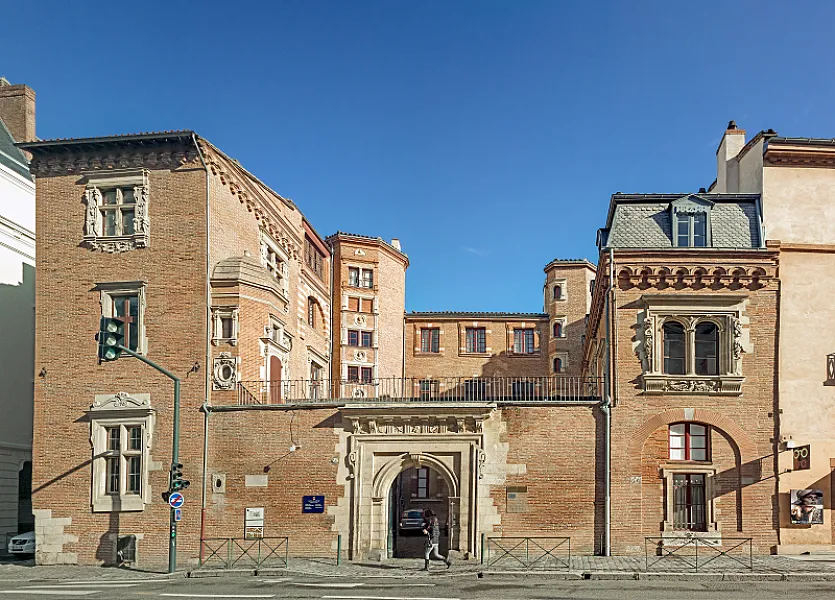
Vieux-Raisin Hotel
- The Hôtel du Vieux-Raisin is a Renaissance mansion.
- It was built in 1518 for Béringuier Maynier, professor of law and capitoul of the city.
- The hotel's architecture is heavily influenced by the Italian Renaissance.
- The hotel's windows are beautifully decorated with pilasters, chandeliers and foliage.
- The hotel's courtyard of honor is designed with a portico inspired by the Hôtel d'Assézat.
- The hotel's monumental fireplace features Renaissance decoration with medallions, cherubs and garlands of plenty.
- The Hôtel du Vieux-Raisin has been listed as a historic monument since 1889.
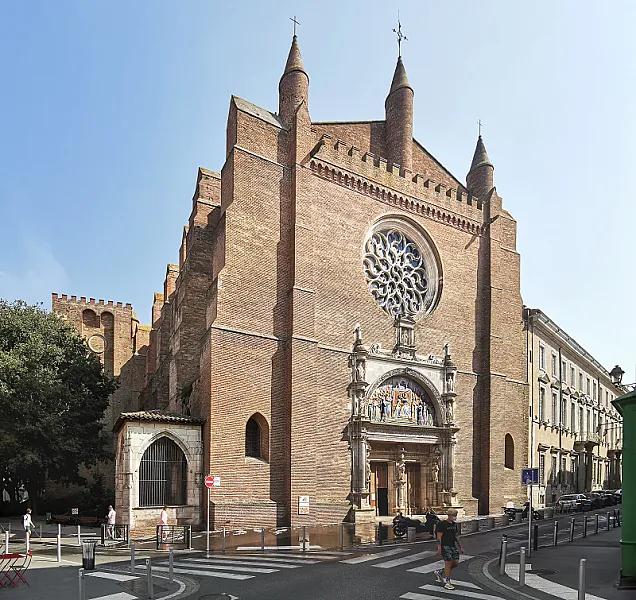
Church of Our Lady of Dalbade
- The Notre-Dame de la Dalbade church was built in the 15th century, and features a Southern Gothic style.
- The church features a facade with an Italian Renaissance-style tympanum made of ceramic.
- The church's interior houses several works of art, including statues and paintings.
- The church's tribune organ, built in the 19th century, is a listed historic monument.

Hôtel de Bagis
- The Hôtel de Bagis, also known as the Hôtel de Clary or Daguin, is a magnificent private mansion.
- Built in the 16th century, it is distinguished by its all-stone facade, which was unique in the city at the time.
- In 1855, the hotel was completed with sculptures by Calvet-Besson.
- The Hôtel de Bagis has been listed as a historic monument since 1889.
Day 1 - Afternoon à Toulouse
4 Points of interest - Duration : 4h30 - Distance : 0.9 km - Walking : 0h11
Hôtel d'Assézat
- The hotel was built between 1555 and 1562 by architects Nicolas Bachelier and his son Dominique Bachelier.
- The hotel is considered a notable example of French Renaissance architecture.
- It is distinguished by its classical facades.
- It houses the Fondation Bemberg museum, which exhibits art collections from the 15th century to the early 20th century.
- The Hôtel d'Assézat has been listed as a historic monument since 1914.

Jacobin Convent
- The Jacobin convent was built by the Order of Preachers in the thirteenth and fourteenth centuries.
- The buildings are entirely brick and represent Languedoc Gothic art.
- The church has housed the reliquaries of Saint Thomas Aquinas since 1369.
- The former University of Toulouse was located in these buildings since its foundation in 1229.
- The convent was used as a barracks and depot after the banning of the Dominican order during the French Revolution.
- The buildings were restored from 1920 and are now open to the public.

Musée du Vieux Toulouse
- The Museum of Old Toulouse has been based in the Hôtel Dumay since 1948, located in the historic center of Toulouse.
- The museum displays objects relating the history of the city of Toulouse from antiquity to the 20th century.
- Portraits, paintings and drawings by Toulouse artists can be found here.
- The museum also has a photographic collection and valuable historical documents.
- The Musée du Vieux-Toulouse opened to the public in 1955, thanks to the donation of the Hôtel Dumay by Dr.

Hotel de Jean-Georges de Nupces
- The Hôtel de Nupces was built in 1716 for Jean-Georges de Nupces, councilor and then president of the parliament of Toulouse. The de Nupces family owned the hotel until 1759, when it passed to the de Senaux family by marriage.
- The hotel became a condominium and now houses apartments and offices.
- Hôtel de Nupces is the first example in Toulouse of a hotel between courtyard and garden.
- The hotel was seized as national property during the French Revolution and was later restored by a real estate developer.
- The Hôtel de Nupces has been listed as a historical monument since June 20, 1950.
Day 2 - Toulouse
10 POIs to discoverDay 2 - Morning à Toulouse
5 Points of interest - Duration : 4h00 - Distance : 1.2 km - Walking : 0h16
Allées du Président-Franklin-Roosevelt
- The streets were named in 1922 after Theodore Roosevelt, president of the United States, and replaced after World War II by Franklin Delano Roosevelt, also president.
- They are part of the historic center of the city and are located in the quartier Saint-Georges The immeubles neoclassical, especially at numbers 1-7 and 11, are listed as historic monuments.
- The central space of the allées has been called esplanade François-Mitterrand since 2007, in homage to the former French president.

Church of Notre-Dame du Taur
- The church is a Catholic religious building.
- Its construction began in the fourteenth century and was completed in the sixteenth century.
- It is an example of southern Gothic art.
- The church of Notre-Dame du Taur was listed as a historical monument in 1840.
- According to tradition, it was built on the spot where the body of Bishop Saturnin is said to have broken loose from the torus that was dragging him behind.
_Le_Square_de_Gaulle.jpg)
Square Charles-de-Gaulle
- The square was created between 1884 and 1887.
- The square was renamed in 1944 in honor of Charles de Gaulle.
- The square houses the Tour des Archives, a notable historical monument.
- Other public works on the square include a monument to Jean Jaurès, a plaque of General de Gaulle, a sculpture entitled "Maternité" and a statue of Claude Nougaro.

Maison de 1924
- The building was designed in 1924 by Jules Calbairac.
- Jules Calbairac was a Toulouse architect.
- He studied at the École supérieure des beaux-arts in Toulouse.The building is located at 7 Rue du Salé.
- Other buildings of heritage interest can be found along the street, in particular numbers 1 bis, 2, 5 and 7.

Maurand Tower
- The Collège de Périgord, founded around 1360 in Toulouse, is a former university college.
- College buildings are built on the site of private mansions, including the Maurand mansion.
- The Maurand tower, part of the hotel, is a rare example of 12th-century Romanesque civil architecture.
- After the French Revolution, the college was closed, then transformed into the diocese's Grand Séminaire and a university library.
- Since 1905, the buildings have belonged to the University of Toulouse, housing the Faculty of Arts.
- The remains of the college, along with the Maurand tower, have been listed as historic monuments since 1931.
Day 2 - Afternoon à Toulouse
5 Points of interest - Duration : 3h30 - Distance : 1.9 km - Walking : 0h25
Toulouse Capitol
- The Capitole is an emblematic monument of Toulouse, housing the city hall and the Capitole Theater.
- Its construction was decided in 1190 by the Capitouls, magistrates of the city, to establish the seat of municipal power.
- This has been the site of municipal power for more than eight centuries.
- Construction of the current palace began in the seventeenth century and continued for nearly two hundred years.
- The only ancient buildings that remain today are the archives tower, the galleries of the Cour Henri-IV and the facade of the town hall.
- The Capitole is listed as a historic monument.

Basilica of St. Sernin
- The basilica of Saint-Sernin is one of the largest Romanesque churches preserved in Europe.
- It was built at the end of the 11th century to house the reliquaries of Saint Saturnin.
- It is the most visited monument in the city and is recognized for its exceptional heritage value.
- The basilica is an important pilgrimage site on the Camino de Santiago.
- It has been listed as a historic monument since 1840 and a UNESCO World Heritage Site since 1998.
- The basilica houses 128 relics, including those of 6 apostles, making it the second Catholic church in the world with more relics after the Vatican.

The Capitol Arcades
- Built between 1851 and 1854.
- Raymond Moretti is the artist responsible for the 29 paintings on the ceiling of the arcades.⭐ The paintings depict key moments and key figures in the history of Toulouse: Saint Sernin, the Venus de Lespugue, aeronautics or Carlos Gardel, among others.
- Raymond Moretti is the artist responsible for the 29 paintings on the ceiling of the arcades.

Donjon du Capitole
- After 60 years of work on the ruins of the great Capitol fire, the city's leaders decided to build the keep in 1525 to protect the archives and gunpowder.
- The keep consists of an upper chamber for the archives and a Petit-Consistoire room on the first floor, which has housed the Office of Tourism of Toulouse since 1948.
- The original roof of the keep featured a wooden girouette and a statue of Lady Tholose, replaced by a copy in 2005.
- Viollet-le-Duc restored the keep between 1873 and 1887 and added a Flemish bell tower.

Port Viguerie
- Port Viguerie is a river port located on the left bank of the Garonne, in Toulouse.
- In 2008, the port was restored and a footbridge was created linking the port to the Raymond VI garden.
- In 2017, a pier and a belvedere were fitted out.
- This operation makes it possible to make this site a link between the historic ports on the right bank of the Garonne and the architectural heritage of the Saint-Cyprien district.
- The Garonne at La Daurade, where the Viguerie port is located, inspired local painters until the beginning of the 20th century, such as Henri Rachou.
Where to Stay in Toulouse
For a two-day visit to Toulouse, location matters more than star ratings: you want to spend time soaking up the rose-brick charm, not commuting. Choosing a base within easy walking distance of the main sights means mornings at the market, afternoons in museums and evenings lingering over cassoulet without worrying about trains. If you plan to focus on the city centre, aim for a place that lets you step out and immediately feel the pulse of the city.
The city is compact and organized around the historic center radiating from the Place du Capitole, with medieval lanes, church squares and a riverside life along the Garonne. Important cultural stops such as the Musée des Augustins and the imposing Saint-Étienne Cathedral all sit within a comfortable walking radius of each other, so the natural strategy for a short stay is to base yourself in or just outside this heart. The train station (Toulouse-Matabiau) and the metro lines make reaching farther neighborhoods quick, but a central location saves you precious hours on a 48-hour itinerary.
If you like being in the thick of things, the area around the Place du Capitole and nearby streets keeps cafés, restaurants and shops at your doorstep. For a slightly calmer, atmospheric option with pretty streets and local bakeries, consider the Carmes quarter or the lanes toward the cathedral; both put the Musée des Augustins and the Saint-Étienne Cathedral within easy reach. If you prefer river views and a village-like feel while still being a short taxi or tram ride from the core, the left-bank neighbourhoods such as Saint-Cyprien are friendly alternatives.
Transport in Toulouse is straightforward: most central attractions are walkable, the metro (two lines) and frequent buses fill gaps, and the city bike scheme is great for short hops over the bridges. If you’re arriving or departing by train or plane, check how close your accommodation is to Matabiau station or the airport shuttle to avoid last-minute stress.
Finally, remember comfort beats glamour for two days: choose a quiet side street if you value sleep, or a central square if you want to be in the action at night. Many central apartments and guesthouses sit in historic buildings—ask about stairs and lifts when booking—and favour places with good local reviews mentioning location. With the city so compact, a well-chosen neighborhood lets you see the Place du Capitole, the museums and the churches at an easy, relaxed pace.
Getting Around Toulouse
Toulouse is a joy to explore because the historic center is compact and the Tisséo network is straightforward: two metro lines, several tram lines, an extensive bus grid and the handy VélôToulouse bike system. Even if you arrive with only a phone and a sense of adventure, you’ll find clear stops, frequent services and easy connections. Signs at stations and ticket machines offer multiple languages, and the metro is a fast way to cover longer distances while walking lets you soak in the pink-brick architecture around Place du Capitole, the Museum of the Augustinians and Saint-Etienne Cathedral. 🚇
Practical ticket tip: buy a single single ticket if you’re making one or two hops, or grab a carnet (multiple-ride pack) or day pass if you’ll be hopping on and off all day — these save you money compared with singles. You can purchase tickets at machines, kiosks, or in the Tisséo app and many stations now accept contactless bank cards. Remember to validate your ticket when you board or at station validators: inspectors do check, and it’s an easy rule to follow. 🎫
Use Google Maps (or the Tisséo app) as your best travel buddy: type your destination and it will mix walking, metro, tram and bus options with live departure times. Google also shows the shortest walking routes across the central streets — super handy between closely spaced sights. If you want to avoid surprises, check live updates before you leave and save a screenshot or offline map if your data is limited. 🗺️
To save money, combine walking with public transport. The core attractions are close enough that you’ll often beat a bus by walking, and short rides on the metro can connect neighborhoods quickly without costing much. If you expect several trips in a day, the carnet or a day pass will pay off. Also consider VélôToulouse for quick, scenic hops along the Garonne — cheaper and more fun than a taxi for short distances.
I still remember the first time we explored: we started at Place du Capitole, walked to the Museum of the Augustinians in about ten lively minutes, then popped into a café. From there we considered the metro but chose to stroll to Saint-Etienne Cathedral — a five-minute walk through narrow lanes that felt like stepping into a postcard. When we did take transit later that afternoon, Google Maps and a validated Tisséo ticket made the rest of the day effortless. You’ll find it just as easy and delightfully local. 💡
What to Pack for Toulouse
Toulouse is the kind of city you explore on foot — winding streets, pink brick façades and churches around every corner. I’ve done days where I walked 12–15 miles (19–24 km) between the Capitole, Basilique Saint-Sernin and the Jacobins, and these items saved me from sore feet, drained batteries and soggy plans. Below are what I always toss in my daypack and why each one mattered the last time I wandered the “Ville Rose.”
1. Comfortable walking shoes (Ecco Soft 7 or similar): I learned the hard way that cute shoes don’t cut it here. I once switched to mid-height Ecco Soft 7s for a weekend and went from aching feet after 6 miles to fresh at 12–15 miles. The city’s mix of cobbles and alleys demands a supportive sole and good grip — your knees will thank you by sunset.
2. Cross-body anti-theft bag: I keep everything in a zipped cross-body (worn in front) because crowds around Place du Capitole get busy. On a long 10+ hour day I had my passport and wallet safe while stopping for coffee or ducking into a church; it’s the difference between a relaxed afternoon and a panicked chase back to your hotel.
3. Weather-appropriate layers: Toulouse weather can flip in a day — sun by noon, cool breeze by evening. I travel with a light merino base, a thin fleece and a packable waterproof shell; once a surprise shower soaked my travel companion’s cotton tee but my packable jacket kept me comfortable during an evening stroll along the Garonne.
4. European power adapter (Type C/E) + wall charger: French sockets are 230V Type C/E — I forgot this once and had to buy an expensive adapter at the station. Bringing the right adapter kept my camera and phone charged for photographing interiors like Basilique Saint-Sernin and evening squares without hunting for outlets.
5. Power bank (10,000 mAh): I use a 10,000 mAh pack and it routinely gives me a full recharge plus a top-up for my camera — essential on days I’m using maps and taking pictures for 8–12 hours. It’s lighter than a second charger and saved me from losing navigation halfway through a self-guided architecture crawl.
6. Optional: compact umbrella & reusable water bottle: A small umbrella tucks into a bag and saved me from a sudden downpour once; a refillable bottle keeps you hydrated while you walk between squares and churches (many fountains and cafés will refill it). Both are small, but they make long days in Toulouse much more pleasant.
Enjoy Your Trip to Toulouse!
In just two days you’ll explore 20 carefully chosen spots across the Pink City, packed with history and charm. From the bustling Place du Capitole to the serene Museum of the Augustinians and the soaring Saint‑Etienne Cathedral, this itinerary gives you everything you need to feel the spirit of Toulouse and see its architectural and cultural highlights.
Remember: this is a GUIDE, not a strict schedule. Be gentle with your plans and leave room for the unexpected — the magic often appears in a wrong turn, a tucked‑away café, or a street musicians’ set by the Garonne. Don’t pressure yourself to see EVERYTHING; choose what moves you, pause when you want, and let spontaneous discoveries shape your days.
I’m genuinely excited for you — you’re going to have an amazing time wandering the Capitole, peeking into churches, tasting local flavors, and soaking up the city’s light on pink brick facades. I hope you collect small joys and create unforgettable memories you’ll carry home long after the trip.
Want a playful way to explore? Try Coddy’s interactive tours — The Alchemist TOULOUSE and Secrets of Toulouse — for gamified city hunts that turn discoveries into tiny adventures. Check them out if you’d like a fun, guided twist on sightseeing.
Have fun and enjoy every moment — and if you want tips or want to share your highlights, I’d love to hear about them. Safe travels!
Want more adventure?
Discover our urban escape games to transform your visit into an interactive adventure!























